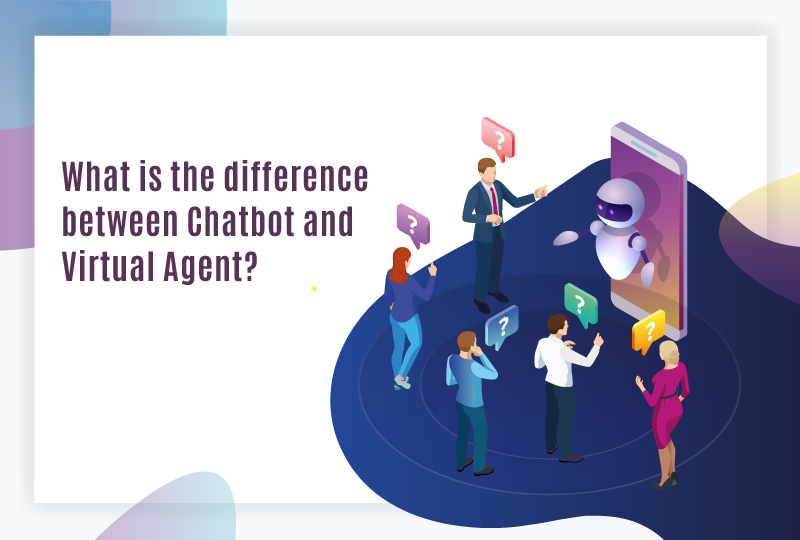Artificial Intelligence is making huge waves in virtually every industry around the world. The idea that technology can directly interact with customers, give them the information they need and even address some of their challenges are both intriguing and exciting.
Consequently, terms like AI Chatbots, Robot, and Virtual Agent (Assistant) are floating around in cyberspace with increasing regularity. But what do they really mean? And are they all the same thing?
Some Chatbot claim that they’re Virtual Assistants. Others boast that their AI capabilities are perfectly suited to a certain industry or vertical. These confusing claims can make it difficult for businesses to keep up with the appropriate terminology in order to make the best possible AI investment.
To eliminate this confusion, let’s start with first understanding the differences between Chatbot and virtual agent. Then we will tackle the issue of industry-specific AI.
What Is The Difference Between Chatbot And Virtual Agent?

A Chatbot is an automated program that mainly functions as an ‘information acquisition’ interface. It is programmed to make use of a virtual conversation technology known as Natural Language Processing (NLP), which enables it to interact with users, interpret their queries, search for information and respond appropriately by providing knowledgebase articles, FAQs, etc.
A virtual agent, also known as a virtual assistant or digital assistant, is an application program that understands natural language voice commands and completes tasks for the user.
Unlike a Chatbot, a virtual agent does not simply provide answers from a readymade knowledge base, but performs a specific task for the user. This could be resetting a password, adding the user to a distribution list, resolving a particular issue, providing temporary USB access, and so on. And because it completes all these tasks without involving human agents, it provides quick issue resolution, which enhances user experience and also enables IT departments to save on operating costs.
[Also Read: How AI with IT Automation can transform towards Digital Innovation]
Understanding the Underlying Technology: Horizontal AI vs. Specialized AI for IT?
This section addresses the concerns around ‘industry-specific AI’.
When it comes to enterprise AI and Natural Language Understanding (NLU) applications (both Chatbot and virtual agent), two main types are available: horizontal AI and vertical or industry-specific AI.
In general, horizontal AI applications can solve a broad range of problems across many different industries. An example of this would be a single AI application with a generic NLU engine that resolves employee queries for HR, Sales, Operations and other departments.
[Also Read: 6 Ways To Successfully Manage Remote IT Team]
Vertical AI and NLU for IT, on the other hand, refer to AI that is highly optimized to solve a specific problem in the IT support industry only. This type of AI uses data from the industry to ‘train’ its algorithms and provides unique insights to help improve IT support outcomes.
Unsurprisingly, it takes longer to implement AI Chatbot and virtual agents for IT when the underlying AI and NLU are generic, compared to AI and NLU applications that are purpose-built for IT processes. Nonetheless, the adoption of the latter type of applications happens at a much higher scale.
We will talk more about Artificial Intelligence (AI) for IT in upcoming posts so keep watching this space for more.
